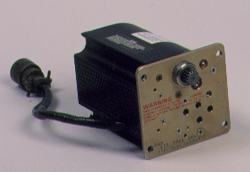Contributed by Larry Troyer, Avionics Tech Rep

The two most common causes for autopilot induced oscillations are incorrect cable tensions or the A/P servo motor.
During autopilot-engaged flight, oscillations can occur in the roll, pitch or yaw axis. The most commonly squawked oscillation occurs in pitch or often referred to as porpoising. Autopilots (A/P) are designed so that the computer senses the need for correction and then commands a servo motor to drive the control surface via a cable. The drive and speed of the motor, as well as the proper tension of the cable, is determined by design based on the specific characteristics of the aircraft it is installed in.
When troubleshooting autopilot oscillations, the first thing to check is the cable tension of the main or bridle cables. If the cable tension is low the servo will have to "spool" up tension in the cable before it actually moves the control surface to make the correction. This causes a delay in the correction and the autopilot will always be behind, which generates a hunting or oscillation. It often becomes divergent, meaning each cycle of the oscillation gets a little larger in magnitude.
The second most common cause of A/P oscillation is the servo motor itself. If it is getting weak and cannot make the correction in a timely manner, it can cause the same symptoms. When the oscillations are rapid and constant in magnitude, it can be an indication of faulty rate feedback from the servo. This generally is a voltage generated by the servo as it turns providing feedback to the computer so it can adjust command to control the speed of the motor. Faulty or missing feedback causes the servo to run too fast and overshoot, thereby causing a rapid oscillation in the control surfaces.
Duncan Aviation has a team of autopilot technical experts with the expertise and capabilities to work on many aircraft models, including Learjet, Citation, Falcon, Challenger, Hawker, Westwind/Astra, King Air, Piper Cheyenne and Rockwell Commander. Search our aircraft parts and capabilities list to verify our expertise on your autopilot. For more information please call Duncan Aviation's Avionics Customer Account Reps or Technical Representatives.
Take advantage of the Duncan Aviation Radar Promotion and get $100 off of your radar service including functional checks, evaluations, repairs and overhauls.
Larry Troyer serves as an Avionics Tech Rep at Duncan Aviation's Lincoln, Neb. (LNK) facility, specializing in Auto Pilot Systems, Air Data Computers, EFIS, Roll Modules, Mode Couplers and Selectors, Static Inverters, Servos, Spoiler Systems, Cabin Displays and EFD Components. He began his career in aviation in 1982.


